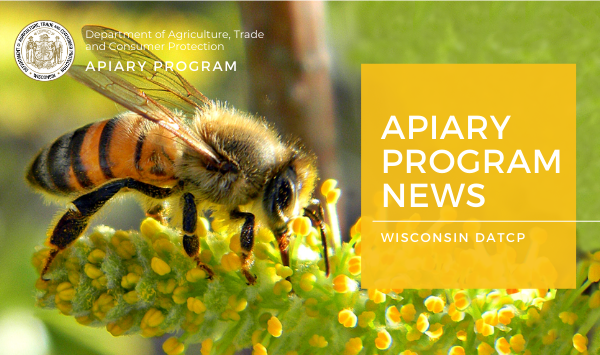
Dear Wisconsin beekeepers and those interested in honey bees and wild pollinators:
This is the third quarterly update of 2022 from the Wisconsin Department of Agriculture, Trade and Consumer Protection’s (DATCP) apiary program. Please let us know how you use this newsletter and send any feedback, questions, or ideas for future updates to Frances.Hegarty@wisconsin.gov.
DATCP apiary inspections are free, and for most beekeepers, this is usually sufficient. If you are moving honey bees out of Wisconsin, the state you are moving honey bees to might require you to obtain a Wisconsin Apiary Certificate of Inspection from DATCP.
If a certificate is required, migratory beekeepers need to pay $50 for each Wisconsin Apiary Certificate of Inspection for moving honey bee hives and equipment to other states. This is due to a new legal review of apiary program practices and Wis. Admin Code § ATCP 21.05(3)(a), which says that DATCP shall charge a fee of $50 for each certificate issued under this section.
If you are moving honey bees or regulated honey bee materials into another state, verify that state’s requirements with their local apiary inspection service. If you need to schedule an apiary inspection, contact a DATCP apiary inspector to set up an appointment.
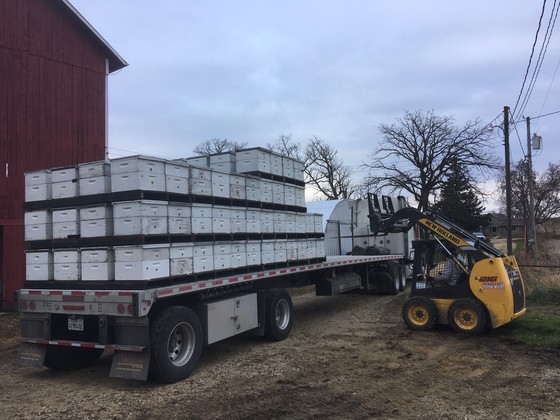 Photo: Honey bee colonies being loaded onto a truck for transport.
Are you interested in citizen science? Check out the USGS/FWS Native Bee Lab’s Ask A Bumble Bee Project (AABB)! It is an observational community science project for documenting bumble bee floral preference with almost no prior knowledge required for participants. All you need is a phone and the ability to tell a bumble bee vs. a carpenter bee or other insects.
The project’s goal is to quantify which plants bumble bees use and do not use. You would think we already know this, but we mostly have anecdotal data and scattered studies that ignore plants bumble bees do not visit. This data can improve planting guides, allow comparisons of bee preference across regions and habitats, elucidate effects of different plant combinations, and more.
This project is uniquely fun and easy because you can do it anywhere bumble bees occur, with no transects or area measurements required. You simply walk around an area of your choosing for 30 minutes and photograph all the blooming flower species while tallying bumble bee and carpenter bee visitation. Some of the best data comes from places with high floral richness and diversity, like a planted yard, botanical garden, wild meadow, urban area, or other areas with flowers.
The project is based in the Northeast U.S., so Wisconsin is outside the current target range. However, we are still eager to collect data from Wisconsin in hopes of receiving funding to expand this project across the country.
To learn more, check out this website: https://u.osu.edu/askabumble/. To sign up, email bumblebeecount@gmail.com.
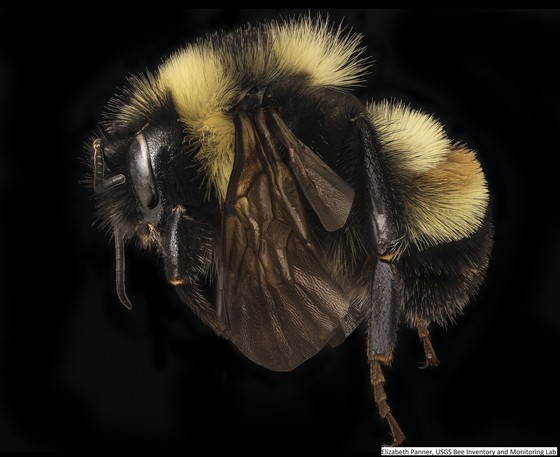 Photo: Rusty Patch Bumble Bee (Bombus affinis), Elizabeth Panner, USGS Bee Inventory and Monitoring Lab.
Get to know the differences between Wisconsin’s bees and their key contributions to our crops and the environment with this Wisconsin bee-id guide from the University of Wisconsin-Madison Division of Extension. It introduces 13 of the most common types of bees found in Wisconsin, including the very small sweat bee, honey bee, bumble bee, and more.
Check out the University of Wisconsin-Madison’s Bumble Bees of Wisconsin guide to learn more about our 20 native bumble bees, their color morphs, activity period, preferred flowers, and more.
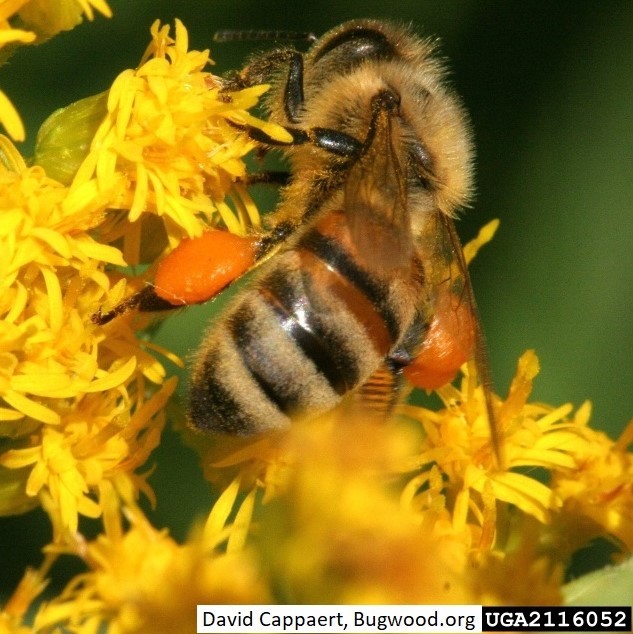 Photo: Honey bee (Apis mellifera) foraging with full pollen sacs. David Cappaert, Bugwood.org.
As the weather begins to cool later this season, but at least six weeks before frost sets in, consider protecting pollinators by planting native perennials.
The Native Pollinator Garden Recipe Card for the Midwest is a native garden planting layout template for smaller spaces, approximately 3’ x 6’, and it contains lists of native flowering plants and brief instructions. Developed by the Pollinator Partnership, it has easy to follow guidelines for creating home pollinator gardens that provide diverse and colorful herbaceous floral displays and resources across growing seasons.
The Pollinator Partnership’s eco-regional planting guides are more extensive. They cover specific parts of Wisconsin and other, adjacent parts of the U.S.:
Check out the Xerces Society’s Great Lakes Region Pollinator Conservation Resource Guide, which includes plant lists, habitat installation guides, native seeds, plant vendors, identification, and more.
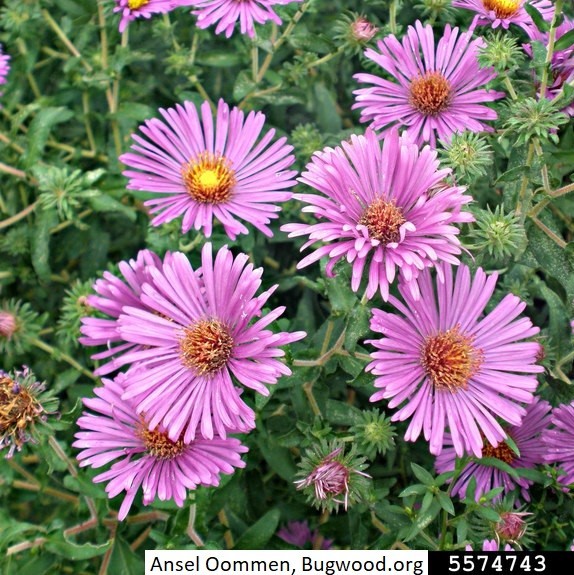 New England aster (Symphyotrichum novae-angliae). Ansel Oommen, Bugwood.org.
The DNR has a webinar entitled Being a Better Bear Neighbor: Learn to Live Alongside Wisconsin’s Largest Carnivore.
Depending on the specifics of each case, bear damage abatement assistance and, in some cases, compensation for damages from bears may be available to apiary owners through the Wildlife Damage Abatement and Claims Program (WDACP). The program has provided electric fencing materials for more than 800 fences for the protection of apiaries across the state. The WDACP is a DNR program, but it is administered through each county. An apiary owner interested in receiving assistance through the program should contact the appropriate WDACP county contact.
For general bear conflict education see the DNR’s Living with Black Bears in Wisconsin pamphlet.
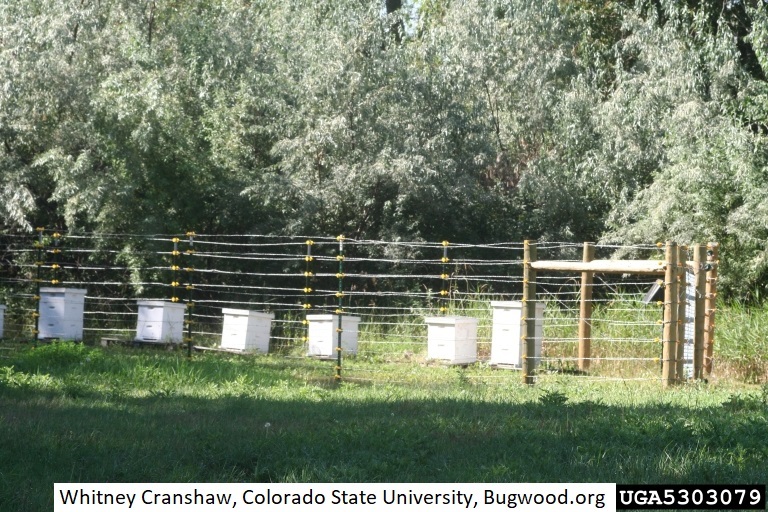 Photo: Bee yard surrounded by an electric fence. Whitney Cranshaw, Colorado State University, Bugwood.org.
Apples are an important pollinator-dependent crop grown in commercial production in Wisconsin and throughout the U.S. The U.S. Apple Association’s Pollinator Best Management Practices for Apples publication is now available for use. It was created in partnership with the Honey Bee Health Coalition (HBHC), and it provides guidance on pollinator protection in orchards.
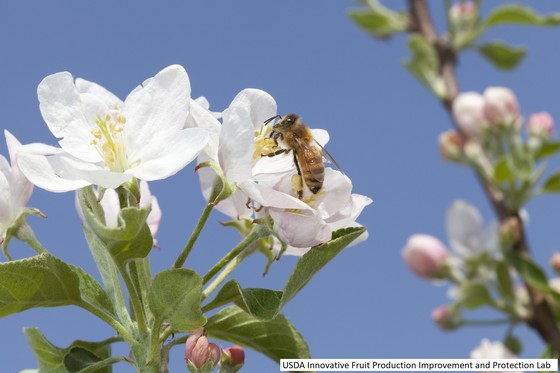 Photo: Honey bee (Apis mellifera) on an apple bloom, USDA Innovative Fruit Production, Improvement, and Protection Lab.
Find more information about the DATCP Apiary Program and the Wisconsin Pollinator Protection Plan via the DATCP Beekeeping and Pollinators webpage.
Division of Agricultural Resource Management | Bureau of Plant Industry
Having trouble viewing this email? View it as a Web page.
|